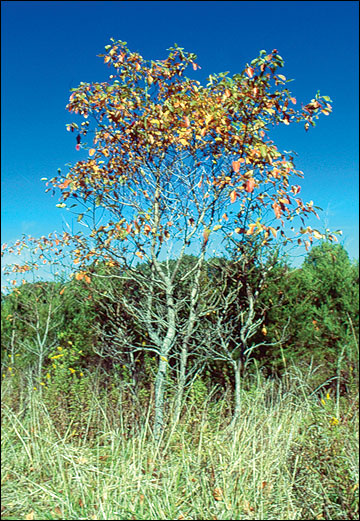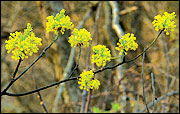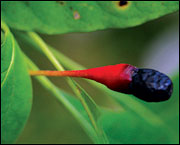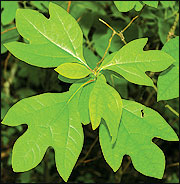Sassafras
- Sassafras albidum
Woody
Sassafras grows as a short to medium-sized tree. Dense colonies of small sprouts may afford summer thermal and escape cover.
Missouri Department of Conservation
Description
Sassafras trees are short to medium-sized and sometimes form dense colonies from root sprouts. Sassafras is easily identified by the leaves that have margins of three shapes: entire, one-lobed and three-lobed. The leaves have a spicy aroma when crushed and turn orange as early as late August. The twigs have a yellow-green hue, turn upward at the tips and also have a spicy fragrance when crushed. The dark blackish-blue fruits attach to a long, red, swollen stalk and mature in early fall. Sassafras can be found growing in old fields, fencerows, railroads and roadsides as well as on the border of dry woods, glades, prairies and bottomlands.
Use by bobwhites
Perhaps best known for the tea made from its root bark, sassafras is also an important dietary staple for many wildlife species. Deer, rabbits and woodchucks browse the leaves. Bobwhites and other songbirds frequently consume the fruits. Dense colonies may provide summer thermal and escape cover.






